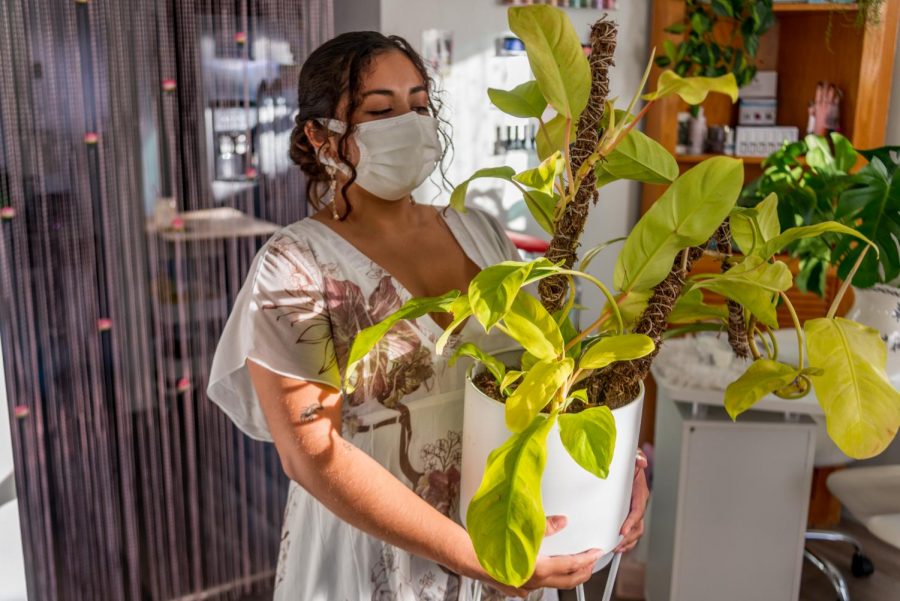Winter is coming, and with it comes days without vitamin D. What better way to boost your mood on a gloomy winter day than by buying and caring for a new plant?
For old and new plant lovers, now is the time to fill your space with warmth and life. A&E spoke with local houseplant experts to deliver tips and tricks that will keep your plants alive through the winter season and beyond.
Lighting: Plants grow best in south- and west-facing windows, but some plants, like monsteras, pothos and snake plants, do well in north- and east-facing windows, according to Isabella García-Pizaño. García-Pizaño, along with David Enrrigue Michel, runs the Instagram plant shop, Niños Verdes. Both are recent University of Minnesota graduates.
To supplement your natural light, buy a grow light, which will promote growth, foliage and flower blossoming in your plant, according to Julie Weisenhorn, an Extension Educator and Associate Extension Professor for the University of Minnesota’s Department of Horticultural Science. Weisenhorn keeps her grow lights on for about 14-16 hours a day.
For beginner plant lovers, try looking for low-light plants. These are best for dorm rooms or houses without big, south-facing windows. Weisenhorn recommended visiting the University’s Extension webpage where you can learn information about the differing light requirements needed for each of your plants.
Watering: As the season changes, so should your watering schedule. In the winter, plants can’t take the same amount of water that they usually take in the summer. Enrrigue Michel recommended watering your plants at most twice a month as it gets colder. “You can come back from underwatering. You cannot come back from overwatering,” Enrrigue Michel said.
Maintaining moisture: That dry winter air doesn’t just impact your chapped lips. Plants also suffer from the winter deficit of moisture and humidity. To combat this, Enrrigue Michel said that misting your plants in the morning and the night will provide them with much-needed moisture and humidity. García-Pizaño added that placing a cup or bowl of water next to your plants is also a great way to supplement this.
Positioning: For many of us who live in older buildings, our old, cold windows may not be the best for our plants. Keep your plants away from cold windowsills. If you can feel the cold from your window pane, so can your plants. Keeping them in a warm spot, near a radiator, or purchasing a heating mat, per Weisenhorn’s recommendation, prevents plants from freezing during the winter.
DIY Fertilizer: Put your coffee grounds and egg shells to good use by turning them into a fertilizer for your plants!
Coffee fertilizer: Using old coffee grounds, place them in a cup or bowl with water, and let the grounds steep in the water for a few hours. Remove the grounds from the water with a strainer, and pour the coffee water over your plants. According to Niños Verdes, this promotes rapid growth.
Egg shells: After making some eggs, take your egg shells and boil them in a pot with water to remove any bacteria from the shells. Crunch them up and sprinkle them around the soil of your plants. This provides your plant with calcium, according to Niños Verdes.
Plants for beginners: “People’s favorite is pothos,” said Enrrigue Michel. Other college student-friendly plants include monsteras and snake plants.
Have more questions? Both the Minnesota horticultural department and Niños Verdes can answer all your houseplant queries. Niños Verdes welcomes plant-related questions in its direct messages. Or students can use the yard and garden Extension to ask an expert any gardening or plantcare question under the sun (or the grow light).
Correction: A previous version of this article misstated Julie Weisenhorn’s title.








